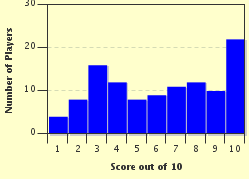Quiz Answer Key and Fun Facts
1. In the late 1930s, Westland developed a twin engined fighter that saw limited service with the RAF. What was the name of that aircraft?
2. De Havilland intended this twin engined passenger plane to serve the RAF as a troop transporter, but the outbreak of war saw the plans dropped so De Havilland could concentrate on building Tiger Moths for the RAF. A few of the aircraft that were built did see RAF service during World War II. What was the name of that aircraft?
3. Not all aircraft used by the RAF during Word War II were for front line service, but were used for training purposes. Which aircraft made by Percival was used as a radio and communications training aircaft?
4. Avro built the well known Lancaster bomber during World War II, but what was the name of the aircraft they built originally as bomber and coastal patrol that proved to be more suited to the role of a multi engined trainer aircraft?
5. Initially built as a variant of the Wellington bomber, by the time it entered service this Vickers aircraft was already overshadowed by the arrival of the Short Sterling and Handley Page Halifax. However it found a use with Coastal Command as a maritime aircraft and was fitted with a specially designed lifeboat to rescue downed airmen. What was the name of that aircraft?
6. A number of RAF aircraft were built overseas. This aircraft, built by Vultee in the US, was initally purchased as a dive bomber, due to the RAF being impressed by the capabilites of the Junker's Ju 87 Stuka. However, it was later used in by the RAF in Burma, attacking the Japanese forces. What was the name of this aircraft?
7. This amphibious aircraft built by Supermarine was used by both the Royal Navy on board large warships and by the RAF in air sea rescue roles.
8. Initially built as an army cooperation aircraft to drop messages and act as an artillery spotter, this Westland aircraft went on to provide valuable service, inserting spies into occupied Europe and recovering aircrew who had bailed out to avoid being captured. What was the name of this aircraft?
9. This Gloster aircraft was the last RAF bi-plane to see frontline service. Although already obsolete against modern monoplane fighters it did manage some success and saw service with a number of other airforces.
10. Designed by Airspeed, this aircraft was also used by the RAF as a twin engined trainer aircraft for bomber crews. What was this aircraft called?
Source: Author
mcsurfie
This quiz was reviewed by FunTrivia editor
bloomsby before going online.
Any errors found in FunTrivia content are routinely corrected through our feedback system.


